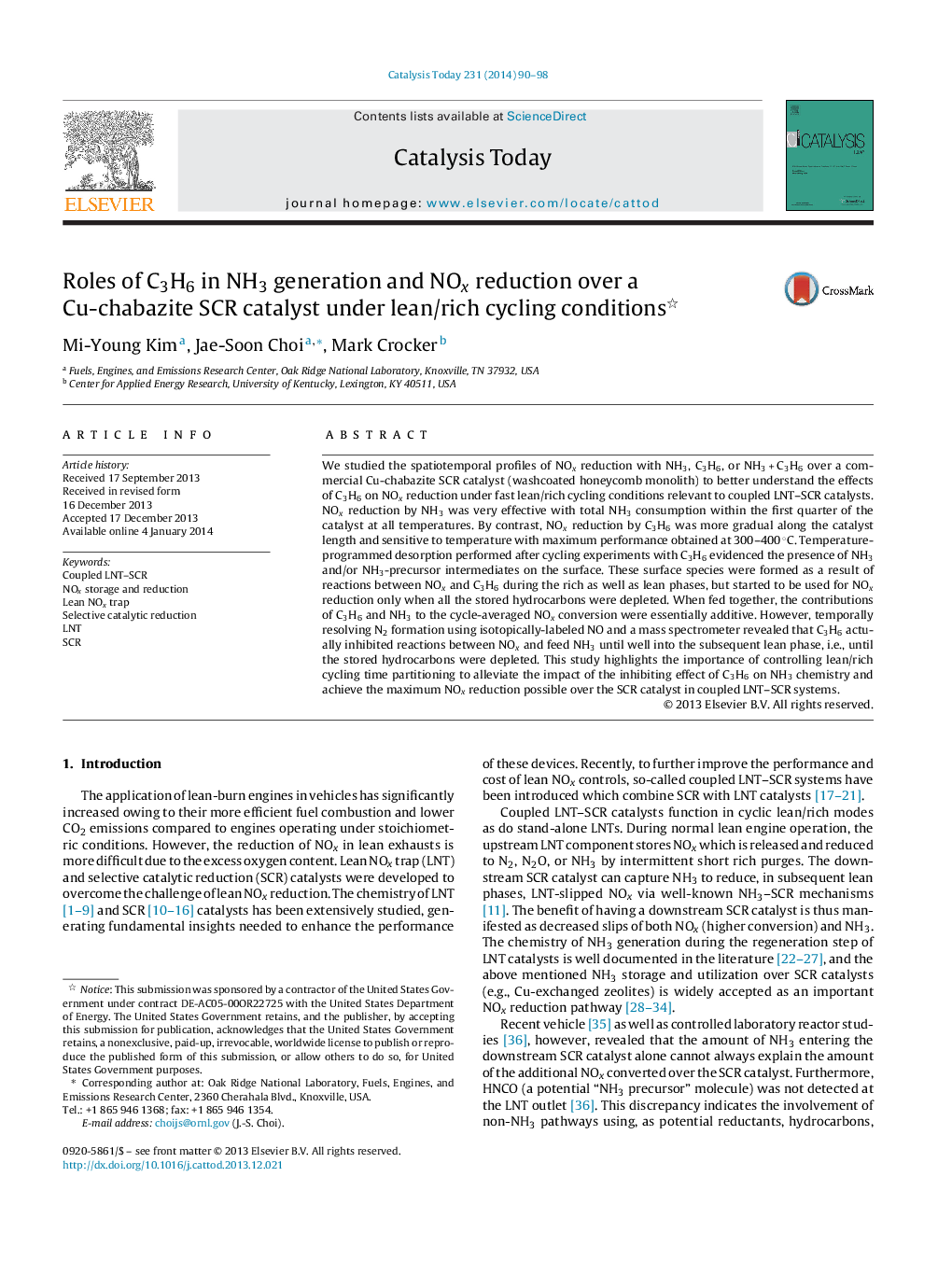| کد مقاله | کد نشریه | سال انتشار | مقاله انگلیسی | نسخه تمام متن |
|---|---|---|---|---|
| 54711 | 47023 | 2014 | 9 صفحه PDF | دانلود رایگان |

• We investigated NOx reduction by C3H6 over a Cu-chabazite SCR catalyst under lean/rich cycling conditions.
• C3H6 reacts with NOx to form surface NH3 and/or NH3 precursors.
• NOx reduction by NH3 is inhibited by hydrocarbons.
• NOx reduction by NH3 becomes effective when C3H6 is depleted.
• The findings clarify HC-chemistry relevant to LNT–SCR catalysts.
We studied the spatiotemporal profiles of NOx reduction with NH3, C3H6, or NH3 + C3H6 over a commercial Cu-chabazite SCR catalyst (washcoated honeycomb monolith) to better understand the effects of C3H6 on NOx reduction under fast lean/rich cycling conditions relevant to coupled LNT–SCR catalysts. NOx reduction by NH3 was very effective with total NH3 consumption within the first quarter of the catalyst at all temperatures. By contrast, NOx reduction by C3H6 was more gradual along the catalyst length and sensitive to temperature with maximum performance obtained at 300–400 °C. Temperature-programmed desorption performed after cycling experiments with C3H6 evidenced the presence of NH3 and/or NH3-precursor intermediates on the surface. These surface species were formed as a result of reactions between NOx and C3H6 during the rich as well as lean phases, but started to be used for NOx reduction only when all the stored hydrocarbons were depleted. When fed together, the contributions of C3H6 and NH3 to the cycle-averaged NOx conversion were essentially additive. However, temporally resolving N2 formation using isotopically-labeled NO and a mass spectrometer revealed that C3H6 actually inhibited reactions between NOx and feed NH3 until well into the subsequent lean phase, i.e., until the stored hydrocarbons were depleted. This study highlights the importance of controlling lean/rich cycling time partitioning to alleviate the impact of the inhibiting effect of C3H6 on NH3 chemistry and achieve the maximum NOx reduction possible over the SCR catalyst in coupled LNT–SCR systems.
Figure optionsDownload high-quality image (271 K)Download as PowerPoint slide
Journal: Catalysis Today - Volume 231, 1 August 2014, Pages 90–98